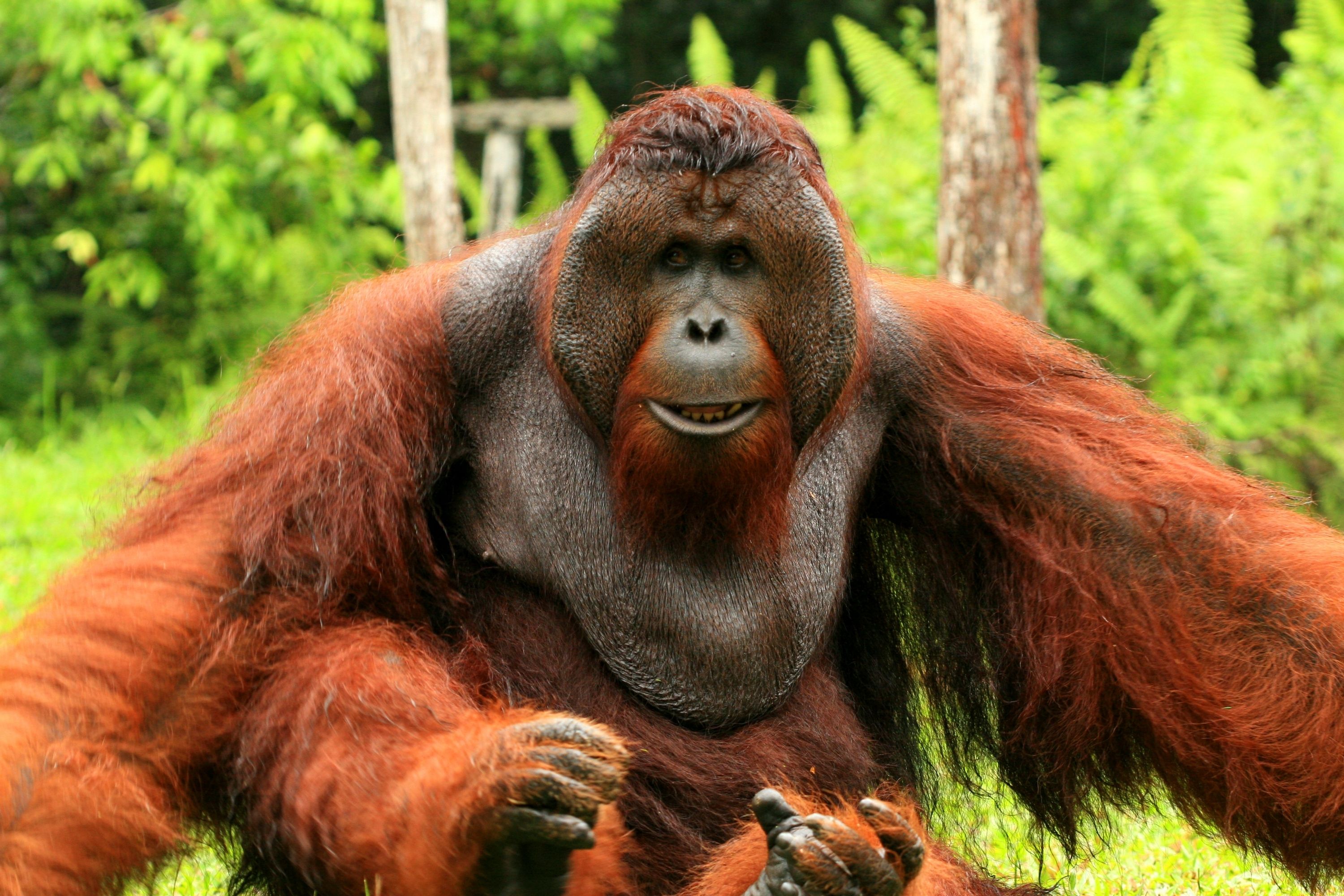Bornean orangutan
(Pongo pygmaeus)

Description
The Bornean orangutan (Pongo pygmaeus) is a species of orangutan endemic to the island of Borneo. Together with the Sumatran orangutan (Pongo abelii) and Tapanuli orangutan (Pongo tapanuliensis), it belongs to the only genus of great apes native to Asia. Like the other great apes, orangutans are highly intelligent, displaying tool use and distinct cultural patterns in the wild. Orangutans share approximately 97% of their DNA with humans. The Bornean orangutan is a Critically Endangered species, with deforestation, palm oil plantations, and hunting posing a serious threat to its continued existence. The Bornean orangutan is the third-largest ape after the eastern gorilla and western gorilla, and the largest truly arboreal (or tree-dwelling) extant animal. Body weights broadly overlap with the considerably taller Homo sapiens, but the latter is considerably more variable in size. By comparison, the Sumatran orangutan is similar in size but, on average, is marginally lighter in weight. A survey of wild orangutans found that males weigh on average 75 kg (165 lb), ranging from 50-100 kg (110-220 lb), and 1.2-1.7 m (3.9-5.6 ft) long; females average 38.5 kg (85 lb), ranging from 30-50 kg (66-110 lb), and 1-1.2 m (3.3-3.9 ft) long. While in captivity, orangutans can grow considerably overweight, up to more than 165 kg (364 lb). The heaviest known male orangutan in captivity was an obese male named "Andy", who weighed 204 kg (450 lb) in 1959 when he was 13 years old. The Bornean orangutan has a distinctive body shape with very long arms that may reach up to 1.5 metres in length. It has grey skin, a coarse, shaggy, reddish coat and prehensile, grasping hands and feet. Its coat does not cover its face unlike most mammals, although Bornean orangutans do have some hair on their faces including a beard and mustache. It also has large, fatty cheek pads known as flanges as well as a pendulous throat sac. A male orangutan at Moscow Zoo. The male's face pad widens as he grows older. Bornean orangutans are highly sexually dimorphic and have several features that differ between males and females. Males have much larger cheek pads, or flanges, that are composed of muscle and large amounts of fat. In females, the flanges are mostly composed of muscle. Males have relatively larger canines and premolars. Males have a more pronounced beard and mustache. The throat sac in males is also considerably larger.
Taxonomic tree:







